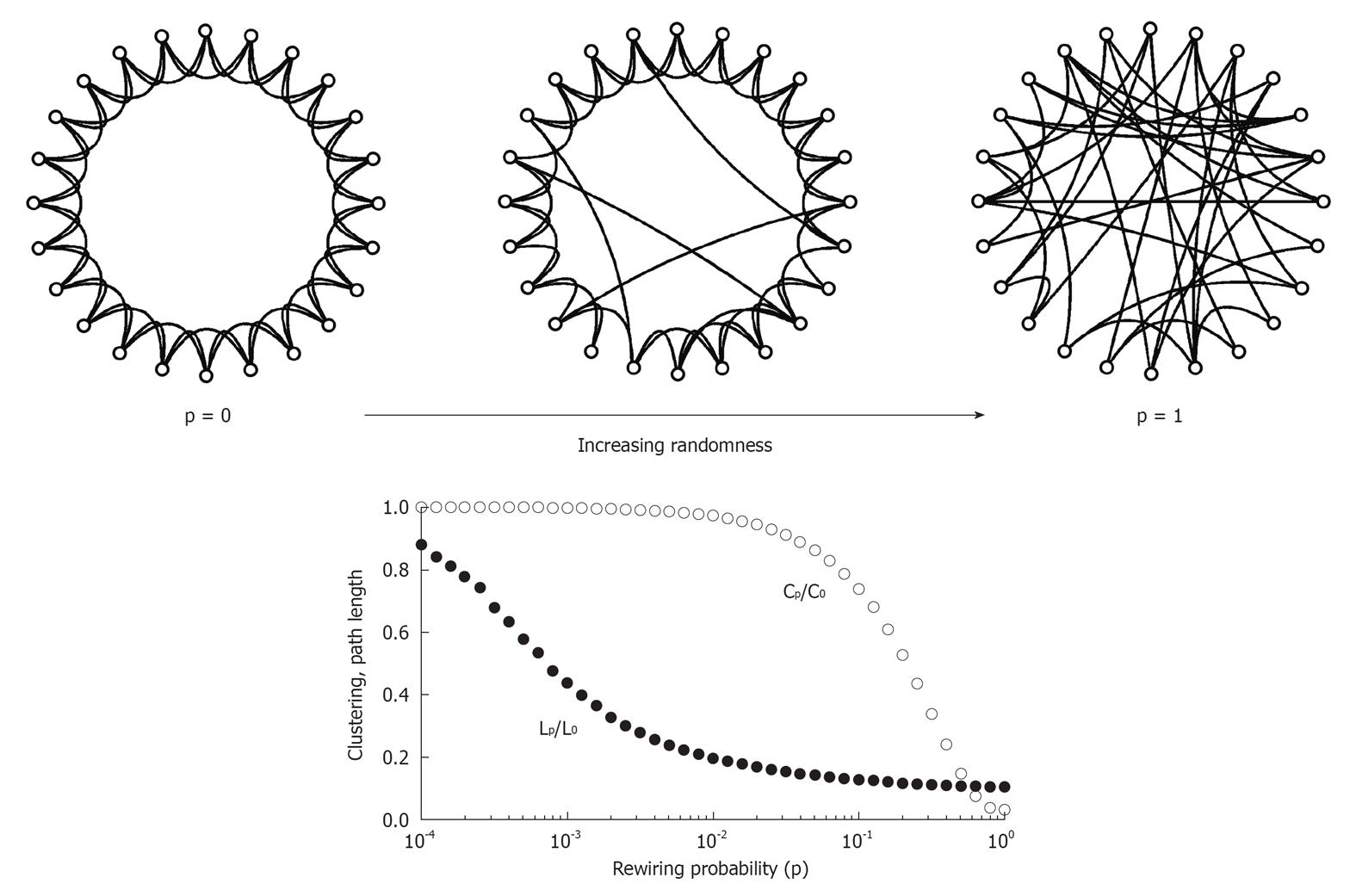Copyright
©2012 Baishideng.
Figure 1 The Watts-Strogatz model of the small world.
The network at the upper left corner represents a ring lattice with circular boundary conditions. Starting from this configuration, connections are randomly rewired with given rewiring probability p. For p = 0 (no rewiring), the network retains its regular lattice topology. For p = 1, the network is completely random, and all lattice-like features have disappeared. Intermediate values of p result in networks that consist of a mixture of random and regular connections. The plot at the bottom shows the clustering coefficient Cp and the path length Lp, both normalized by their values for the regular network (P0, L0). Note that there is a broad range for the rewiring probability p when networks have clustering similar to the regular network’s clustering and a path length similar to the random network’s path. Within this range, networks exhibit small-world attributes. Data computed following the procedure is described in Watts and Strogatz (66), with networks consisting of 1000 nodes and 10 000 edges (data points represent averages of 400 rewiring steps)[85].
- Citation: Micheloyannis S. Graph-based network analysis in schizophrenia. World J Psychiatr 2012; 2(1): 1-12
- URL: https://www.wjgnet.com/2220-3206/full/v2/i1/1.htm
- DOI: https://dx.doi.org/10.5498/wjp.v2.i1.1









